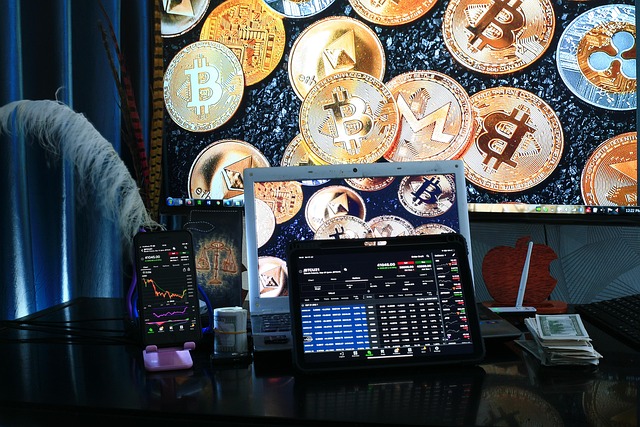Ethereum sees record single-day inflow with 449K ETH in accumulation addresses
Key Takeaways:Ethereum saw a record 449,000 in ETH inflows to accumulation addresses on April 22.Active addresses rose 10%, signaling growing network engagement, but DeFi activity remains weak with declining DEX volumes.Holders in accumulation addresses remain underwater with a realized price of $1,981. Over the past 10 days, Ethereum inflows into accumulation addresses reached their highest levels since 2018. On April 22, a record-breaking 449,000 Ether (ETH), valued at an average price of $1,750, flowed into these addresses, marking the most significant single-day inflow in Ethereum’s history. This surge suggests that long-term holders remain optimistic about Ethereum’s future, despite recent price declines. Ethereum inflows into accumulation addresses. Source: CryptoQuantHowever, the realized price for these accumulation addresses is $1,981, meaning these holders are currently at a loss, as the current market price is below this level. Notably, the realized price had been below Ethereum’s market price since 2018, only recently surpassing it, indicating a shift in holder dynamics.Ethereum realized price for accumulation addresses. Source: CryptoQuantEthereum’s onchain activity has also shown positive momentum over the past few days. Between April 20 and 22, active addresses on the network rose by 10%, from 306,211 to 336,366. This increase and upward price movement signal growing network engagement and bullish sentiment. Yet, decentralized finance (DeFi) activity remains subdued. Data from DefiLlama indicates that decentralized exchange (DEX) volumes are declining, with transactions holding steady at a weekly average of approximately 1.3 million, suggesting limited DeFi momentum.Ethereum DEXs’ volume and transactions. Source: DefiLlamaRelated: Ethereum bounces back as market dominance recovers from all-time lowEthereum faces key resistance at $1,895According to the Cost Basis Distribution (CBD) heatmap for Ethereum, a significant supply concentration is highlighted at $1,895.50, where 1.64 million ETH is held by investors who bought during November 2024. This level, identified as a potential resistance, could see selling pressure as holders might attempt to break even or lock in profits. Based on a technical analysis, the resistance at $1,895 receives further confirmation. The price hovers near the daily chart’s 50-day exponential moving average (EMA), a critical trend reversal indicator. A failure to break above this EMA could signal further bearish momentum, while a sustained move higher might offer hope for bulls.Ethereum 1-day chart. Source: Cointelegraph/TradingViewDespite this, Ethereum remains in a clear downtrend on higher time frame charts, with no definitive signs of a bullish reversal. A daily close above $2,142 is essential to spark a potential recovery, breaking the pattern of lower highs and lower lows. However, anonymous trader Rektproof warns of an emerging bearish fractal—a repeating price pattern that previously led to declines. This suggests Ethereum could face another rejection and drop below $1,400 if the markets start trending down again. Ethereum analysis by RektProof. Source: X.comRelated: Institutions break up with Ethereum but keep ETH on the hookThis article does not contain investment advice or recommendations. Every investment and trading move involves risk, and readers should conduct their own research when making a decision.
Crypto startups no longer welcome in Nvidia’s accelerator program
Nvidia’s accelerator program appears to sidestep digital assets startups, with its help section listing crypto-focused companies as ineligible to join the tech giant’s global network of founders.According to the program website, crypto companies and four other types of businesses are excluded from participating in Nvidia’s Inception: consulting and outsourced development firms, cloud service providers, resellers and distributors, and companies that are already public.Nvidia’s Inception membership criteria. Source: NvidiaThe move indicates a shift in Nvidia’s policy regarding crypto startups in its accelerator program. For instance, in 2018, the company accepted Ubex — a startup combining blockchain and AI for digital advertising — in its Inception program. A Nvidia spokesperson declined to comment on the eligibility policy. The Inception Program is designed for companies younger than 10 years in all stages of funding.Nvidia is best known for its semiconductors, which play a crucial role in powering microchips for data centers. That same processing power has also made Nvidia’s hardware popular among crypto miners, with the company having previously explored crypto-related use cases for its products.Related: Public mining firms sold over 40% of their BTC in March — ReportNvidia and the US-China AI raceNvidia is one of the most valuable companies in the world in terms of market capitalization and a key player in the global artificial intelligence race. The company introduced its H20 chip in 2024, designed to comply with US export restrictions imposed during the Biden administration aimed at limiting China’s access to advanced AI hardware. Despite being less powerful than Nvidia’s top-tier chips, the H20 chips could still enable significant AI advancements in China. In response, the Trump administration imposed stricter export controls to require special licenses for H20 exports to China — a move that could impact Nvidia’s sales. According to the BBC, China accounted for 13% of Nvidia’s sales in 2024. The company anticipates a $5.5 billion revenue hit tied to US export restrictions.Related: The next frontier for crypto will be decentralizing AI
Ex-SEC chair, now heading SDNY, offers rebuke in $12M crypto fraud case
Jay Clayton, recently appointed interim US Attorney for the Southern District of New York (SDNY) and former chair of the Securities and Exchange Commission, has begun offering statements in criminal cases involving crypto fraud.In an April 23 notice, the US Attorney’s Office said Eugene William Austin, also known as Hugh Austin, had been sentenced to 18 years in prison following his conviction on conspiracy to commit wire fraud, conspiracy to commit money laundering, and conspiracy to commit interstate transportation of stolen property. Together with his son, Brandon, sentenced to four years, Austin offered fraudulent crypto investment services, resulting in roughly $12 million in losses to more than 24 people.“For years, Hugh Austin was the leader of a fraud and money laundering scheme that stole more than $12 million from more than two dozen victims,” said Clayton. “Austin involved his own son in his crimes, working with him to rip off victims and spending investor money on personal expenses, like luxury hotels […] Austin will now be held accountable for the harm he caused to individual investors and others.”The criminal case involving digital assets marked one of Clayton’s first public statements since becoming the interim US Attorney on April 22. US President Donald Trump nominated Clayton on Jan. 20 when he took office. The district has since seen the resignation of acting US Attorney Danielle Sassoon in response to the Justice Department directing her to halt a case against New York City Mayor Eric Adams.Related: US prosecutors file over 200 victim statements in Celsius ex-CEO’s caseThe nation’s ‘sovereign district’ overseen by a Trump appointee?Under current law, Clayton can serve as interim US Attorney for the district for 120 days without Senate confirmation. Senate Minority Leader Chuck Schumer blocked a vote on Clayton’s nomination, saying Trump had “no fidelity to the law.”Clayton will likely oversee SDNY during the sentencing hearing for former Celsius CEO Alex Mashinsky and potentially other criminal cases involving cryptocurrency. The district is home to Wall Street firms and many of the country’s most prominent financial institutions. Magazine: SEC’s U-turn on crypto leaves key questions unanswered
Bitcoin long-term holders get $26B boost as BTC price recovers from ‘fairly normal’ 30% correction
Key Takeaways:The Bitcoin long-term holder cohort saw a $26 billion value increase as BTC price surged to $94,900.Short-term holders sold at a loss in early April.Bitcoin’s 30% correction lines up with historical cycles, and BTC could find support in the $88,750 and $91,000 zone. Bitcoin (BTC) long-term holders (LTHs) significantly increased their collective wealth in April as BTC price surged from $74,450 to $94,900. According to data from CryptoQuant, the long-term holders (LTHs) realized market cap increased from $345 billion to $371 billion between April 1 and April 23, marking a $26 billion gain.BTC LTH realized cap drawdown chart. Source: CryptoQuantThis sharp increase in LTH realized cap signals that long-term holders are rewarded for resilience through recent drawdowns. Bitcoin experienced a 30%+ correction between January and early April, a pattern consistent with historical market cycles. Data from past cycles in 2013, 2017, and 2021 shows that such drawdowns are routine after Bitcoin touches new all-time highs, often shaking out weaker hands before resuming its upward trend.Other factors also underlined LTH’s conviction during the correction period. Bitcoin’s growing decoupling from traditional markets, particularly as US equities faced pressure from the trade wars, improved its investment appeal. While stocks tumbled, gold prices surged to new highs at $3,500, reflecting investor demand for non-correlated assets—a trend likely boosted LTHs confidence in Bitcoin’s store-of-value narrative.BTC: STH realized cap drawdown. Source: CryptoQuantOn the other hand, Cointelegraph reported that short-term holders (STHs) returned to profit this week. Still, many sold at a loss during the April drawdown, reflecting their tendency to rotate positions under market stress. This behavior echoes a recurring trend in 2024, where STHs frequently sold to LTHs during corrections.Bitcoin supply in profit market bands signals a bullish outlook, after the total supply in profit increased above the “threshold of optimism”. Currently, 16.7 million BTC in various Bitcoin addresses are in profit. Historical data from 2016, 2020, and 2024 show that when Bitcoin consistently holds above this key bullish zone, it frequently sparks significant bull runs, driving prices to new highs within months.Bitcoin Supply in Profit Market Bands. Source: CryptoQuantRelated: Bitcoin exchange outflows mimic 2023 as whales buy retail ‘panic’Bitcoin may build a new range between $95K-$90KFollowing its rise to $94,900, analysts expect Bitcoin to potentially undergo a cooldown period. MNCapital founder, Michael van de Poppe, mentioned that after a massive breakout, it is “fairly normal to have a slight correction”. Likewise, anonymous crypto trader Jelle pointed out that Bitcoin has tested its weekly resistance for now, and BTC may drop as low as $91,000. From a technical perspective, Bitcoin may consolidate between $94,900 and $88,750 in the coming days. Recent price action suggested a prolonged cooldown following its breakout rally. On the 4-hour chart, the key support zone lies between $90,500 and $88,750, representing a fair value gap. A breach below this range could invalidate the lower time frame (LTF) bullish structure, potentially driving prices toward the next support area between $84,000 and $86,300, where Bitcoin previously consolidated for a week before its strong positive breakout.Bitcoin 4-hour chart. Source: Cointelegraph/TradingViewRelated: Bitcoin’s next big resistance is $95K— What will trigger the breakout?This article does not contain investment advice or recommendations. Every investment and trading move involves risk, and readers should conduct their own research when making a decision.
SEC task force met with Trump-supporting firms to discuss crypto regulation
The US Securities and Exchange Commission (SEC) crypto task force, headed by Hester Peirce, has continued meeting with digital asset company representatives as the agency explores regulatory changes.In an April 24 notice, the SEC task force disclosed a meeting with representatives from crypto firm Ondo Finance and the law firm Davis Polk and Wardwell to discuss “issuing and selling wrapped, tokenized versions of publicly traded US securities.” Ondo Finance donated $1 million to Donald Trump’s inauguration fund, and the law firm announced on April 22 that it would represent the US President’s social media company, Truth Social, to launch crypto-linked exchange-traded funds.According to the meeting request, Ondo Finance planned to discuss registration requirements for tokenized securities, compliance with financial laws, and potentially launching a regulatory sandbox. Cointelegraph reached out to the firm for comment but did not receive a response at the time of publication.The April 24 meeting was the latest in the SEC crypto task force’s outreach to the industry following the departure of former chair Gary Gensler. Former commissioner and Trump appointee Paul Atkins took over leadership at the agency on April 21 after his swearing-in ceremony, but has yet to take action on his proposed crypto agenda.Related: Chiliz meets with SEC Crypto Task Force amid US market reentry plansContinuing outreach to industry under new SEC chairOn April 25, the crypto task force will host a roundtable event to discuss custody, including representatives from Kraken, Anchorage Digital Bank, WisdomTree, and others. Following the approval of crypto exchange-traded funds in 2024, many financial institutions have seen demand for digital asset custody in the US grow significantly.It’s unclear what the SEC’s intentions may be regarding pursuing crypto enforcement cases under Atkins. The commission has stated it will continue cases involving fraudulent activity, but dropped a complaint against Hex founder Richard Heart on April 21. The agency has already announced it will stop investigations or lawsuits against many firms, including Ripple, Coinbase, and Kraken. All three exchanges donated or had executives who supported Trump’s 2024 campaign or inauguration fund.Magazine: Trump’s crypto ventures raise conflict of interest, insider trading questions
Binance rolls out Fund Accounts for asset managers, bridging crypto-TradFi gap
Cryptocurrency exchange Binance has introduced a new fund management solution designed to simplify asset management for portfolio managers, highlighting the growing sophistication of institutional tools in the digital asset space. On April 24, Binance launched Fund Accounts, a tool commonly used by traditional asset managers and brokerage firms to consolidate client assets and streamline portfolio management.Binance said Fund Accounts allow portfolio managers to “consolidate externally-raised investor assets into one or multiple omnibus accounts,” which can reduce operational complexity and enable more efficient trading execution. Presumably, these omnibus accounts operate under a single custodian who executes trades on behalf of their clients. The new program is only available to eligible fund managers who must contact their Binance VIP representative for more information. A Binance spokesperson informed Cointelegraph that fund managers and their investors must pass Know Your Customer and Know Your Business requirements and be licensed or exempted in their jurisdictions to use the Fund Accounts product.Binance is the world’s largest crypto exchange by trading volume, according to CoinMarketCap data. In December, the exchange updated the requirements for its VIP program, which is geared toward institutional investors and private clients. Top crypto spot exchanges as of April 24 based on daily trading volume. Source: CoinMarketCapRelated: Crypto Biz: Ripple’s ‘defining moment,’ Binance’s ongoing purgeTradFi and crypto continue to mergeBinance’s Fund Accounts is another example of traditional finance solutions merging with cryptocurrency, signaling growing institutional involvement. After spending the first decade of crypto largely on the sidelines, institutional investors are now entering the space, driven by the launch of Bitcoin exchange-traded funds (ETFs), the rise of real-world asset tokenization, and attractive yield opportunities in onchain lending.Blockchain companies are also working to bring institutional trading solutions to crypto-native users. On April 24, onchain trading infrastructure provider Theo announced it had raised $20 million to expand its institutional-grade trading platform aimed at serving retail investors. Seventeen investors participated in the funding round, including angel investors from Jane Street, JPMorgan and Citadel.Magazine: Altcoin season to hit in Q2? Mantra’s plan to win trust: Hodler’s Digest, April 13 – 19
Chicago Mercantile Exchange (CME) Group to launch XRP futures
The Chicago Mercantile Exchange (CME) Group, which operates the largest financial derivatives exchanges worldwide, recently announced that XRP (XRP) futures contracts will go live on May 19.According to the April 24 announcement, investors have the option of choosing between micro-sized contracts, featuring 2,500 XRP, or standard contract sizes of 50,000 XRP. All XRP futures contracts will be cash-settled.In January 2025, the CME Group signaled an impending launch of XRP futures before quietly pulling the related page from its website.CME’s announcement is the latest in a growing wave of crypto-focused financial products entering the market or awaiting regulatory approval in the US, a sign that cryptocurrencies have reached a new level of institutional acceptance.The XRP ticker symbol displayed on the CME Group website. Source: CME GroupRelated: CME Group taps Google Cloud for pilot asset tokenization programFinancial institutions push for altcoin financial productsOn March 17, Solana (SOL) futures debuted on the Chicago Mercantile Exchange. The SOL contracts featured a standard contract size of 500 SOL and the more accessible micro contracts for 25 SOL.In April 2025, asset manager Canary Capital submitted an application to the United States Securities and Exchange Commission (SEC) for a staked Tron (TRX) exchange-traded fund (ETF).The asset manager’s proposed ETF will hold spot TRX but will stake a portion of the token to accrue yield, which, at the time of this writing, is 4.5% for TRX.On April 22, Crypto.com and the Trump Media and Technology Group (TMTG), a media conglomerate partially owned by the US President, signed a deal to launch an ETF tracking US crypto projects.The ETF will launch under the Truth.Fi banner, which is US President Trump’s decentralized finance project, and is expected to start trading later in 2025.List of pending ETF applications. Source: Eric Balchunas There are now more than 70 crypto ETF applications waiting to be reviewed by the SEC, according to Bloomberg ETF analyst Eric Balchunas.”Everything from XRP, Litecoin, and Solana to Penguins, Doge, 2x Melania, and everything in between. Gonna be a wild year,” Balchunas wrote in an April 21 X post.Magazine: Ethereum maxis should become ‘assholes’ to win TradFi tokenization race
Bitcoin rebounds as bulls eye $100K and bears scramble to cover short positions
Key takeaways: Bearish Bitcoin traders were caught off guard by BTC’s rally above $90,000.Spot volumes are driving the Bitcoin price rally.Derivatives positions with a bearish bias remain at risk of liquidation.Bitcoin (BTC) held above the $93,000 mark on April 24, suggesting a potential conclusion to the 52-day bear market that bottomed at $74,400. Although Bitcoin is beginning to show signs of decoupling from the stock market, professional traders have not altered their strategies, as indicated by BTC futures and margin market data.BTC top traders’ long-to-short ratio. Source: CoinGlassA higher long-to-short ratio reflects a preference for long (buy) positions, while a lower ratio indicates a tilt toward short (sell) contracts. Currently, the top traders’ long-to-short ratio on Binance stands at 1.5x, a notable decrease from the 2x level observed ten days earlier. At OKX, the ratio peaked near 1.1x on April 17 but has since lost momentum and now sits at 0.9x.Bitcoin shines as dollar weakens and S&P 500 targets are slashedBitcoin’s 10% rally between April 20 and April 24 coincided with a more conciliatory stance from US President Donald Trump regarding import tariffs and his criticism of Federal Reserve Chair Jerome Powell, who has faced scrutiny for maintaining high interest rates. On April 24, Trump stated he had “no intention” of firing Powell, marking a notable shift from his previous rhetoric.Amid economic uncertainty, Deutsche Bank strategists have reduced their year-end S&P 500 target by 12% to 6,150. Meanwhile, the US dollar has weakened against other major currencies, pushing the DXY index below 99 for the first time in three years. Despite a modest 6% gain over the past 30 days, Bitcoin’s performance has secured it a place among the world’s top eight tradable assets, with a market capitalization of $1.84 trillion.The sharp move above $90,000 caught Bitcoin bears off guard, resulting in over $390 million in leveraged short (sell) futures liquidations between April 21 and April 22. More significantly, aggregate open interest in BTC futures remains just 5% below its all-time high, indicating that bearish traders have not fully exited their positions.BTC futures liquidation heatmap, USD. Source: CoinGlassIf Bitcoin’s price maintains its upward momentum and breaks above $95,000, an additional $700 million in short (sell) futures positions could be liquidated, according to CoinGlass data. This potential short squeeze may prove especially challenging for bears, given the robust inflows into spot Bitcoin exchange-traded funds (ETFs), which totaled over $2.2 billion between April 21 and April 23.A newly announced joint venture involving SoftBank, Cantor Fitzgerald, and Tether aims to accumulate Bitcoin through convertible bonds and equity financing, which could further strengthen the bullish case. Named “Twenty One Capital,” the Bitcoin treasury company is led by Strike founder Jack Mallers and plans to launch with 42,000 BTC.Related: Sovereign wealth funds piling into BTC as retail exits — Coinbase execThe muted response from top traders in BTC margin and futures markets suggests that the recent buying pressure has originated mainly from spot markets, which is generally considered a positive indicator for a sustainable bull run.The longer Bitcoin consolidates above $90,000, the greater the pressure on bears to cover their shorts, as this level reinforces the narrative that Bitcoin is decoupling from the stock market. This could provide the confidence needed to challenge the $100,000 psychological threshold.This article is for general information purposes and is not intended to be and should not be taken as legal or investment advice. The views, thoughts, and opinions expressed here are the author’s alone and do not necessarily reflect or represent the views and opinions of Cointelegraph.








